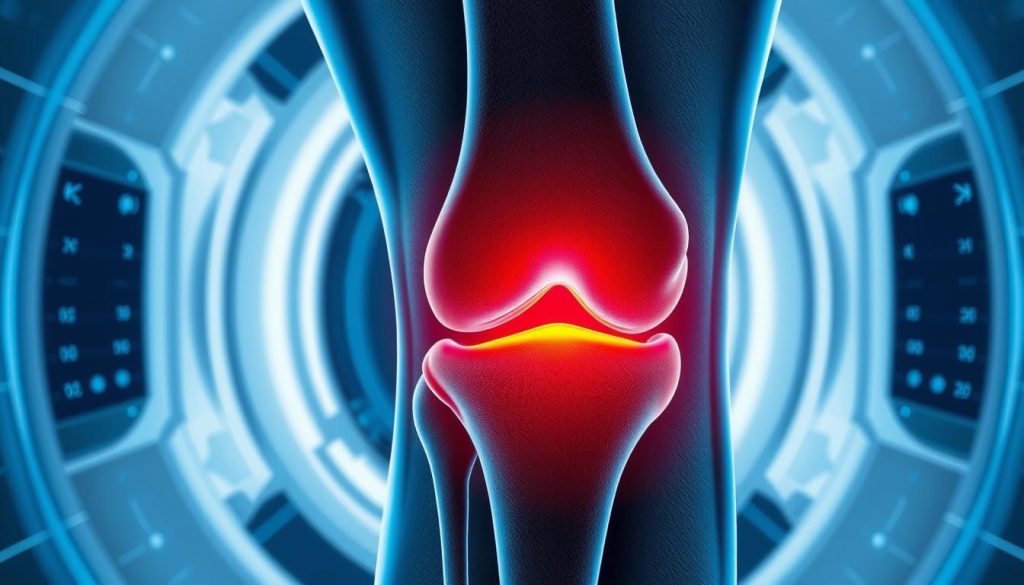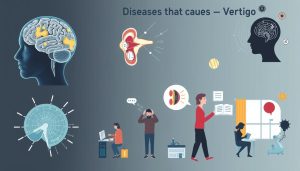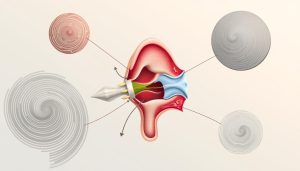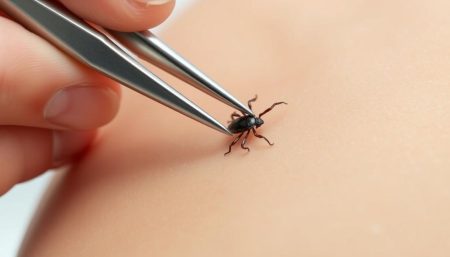Knee injuries can really hurt, and sometimes surgery is needed. Meniscus surgery fixes or removes damaged cartilage in the knee. It’s a big step towards healing.
Recovering from meniscus surgery is different for everyone. The type of tear and surgery method play big roles. Most people need a few weeks to several months to get better.
It’s important to follow a knee injury rehab plan during this time. This helps you heal the best way possible.
There are now more ways to treat meniscus injuries. Doctors can choose from small arthroscopic surgeries to bigger open surgeries. After surgery, rest, physical therapy, and slowly getting back to activities are key.
Knowing what to expect and the treatment options can help you prepare. With the right care and rehab, many people get their knee function back and live their lives again.
Understanding Meniscus Anatomy and Function
The meniscus is key to knee health and stability. It’s a crescent-shaped cartilage that cushions the thighbone and shinbone. It absorbs shock and spreads weight evenly. Knowing how it works is important for preventing knee arthritis.
Structure of the Meniscus
The meniscus is made of tough, rubbery tissue. Each knee has two menisci: the medial on the inner side and the lateral on the outer side. They’re crescent-shaped and sit between the femur and tibia. They help distribute body weight and reduce friction during movement.
Role in Knee Stability
Menisci are vital for knee stability. They help:
- Distribute body weight across the knee joint
- Absorb shock during physical activities
- Improve joint lubrication
- Prevent bone-on-bone contact
These roles are key for preventing knee arthritis and keeping joints healthy.
Common Causes of Meniscus Damage
Meniscus tears can happen for many reasons:
- Sports injuries, like in contact sports
- Sudden twisting or turning movements
- Degenerative changes as we age
- Repetitive stress from everyday activities
Knowing these causes helps in preventing knee arthritis and keeping knees healthy.
Types of Meniscus Tears and Their Symptoms
Meniscus tears vary in type, each with its own symptoms. Knowing these differences is key for the right treatment. Let’s look at the most common types and their signs.
Radial tears start from the inner edge and go to the outer rim. They cause sharp pain and a clicking sound when moving the knee. Horizontal tears split the meniscus, leading to ongoing pain and swelling.
Flap tears create a small, unstable piece that can get caught, causing sudden pain and knee locking. Bucket-handle tears are severe, where a big part of the meniscus moves, making it hard to move the knee.
- Pain during activities or when touched
- Swelling and stiffness
- Difficulty fully extending the knee
- Feeling of the knee “giving way”
The tear’s location and how bad it is affect treatment choices. Some tears might heal with rest, while others need surgery. Getting the right diagnosis is important for the best treatment and recovery.
Diagnostic Process for Meniscus Injuries
Diagnosing meniscus injuries is a detailed process in orthopedic surgery. Doctors use different methods to check for damage and decide the best treatment.
Physical Examination Techniques
Orthopedic surgeons first do a hands-on check. They look for swelling, tenderness, and how well the knee moves. They use two main tests:
- McMurray test: The doctor bends and rotates the knee to feel for a clicking sound.
- Apley grind test: Pressure is applied to the knee while rotating the leg.
Imaging Studies and Tests
To confirm the diagnosis, doctors might order:
- X-rays: Show bone structure and rule out fractures
- MRI scans: Provide detailed images of soft tissues
- Arthroscopy: A minimally invasive procedure for direct visualization

Determining Surgery Necessity
Deciding on surgery depends on several factors:
| Factor | Consideration |
|---|---|
| Tear type and location | Affects healing ability |
| Patient age | Younger patients may benefit more from repair |
| Activity level | High-demand lifestyles may require surgical intervention |
| Overall health | Determines ability to undergo and recover from surgery |
This detailed evaluation ensures patients get care that fits their specific meniscus injury.
Meniscus Surgery: Procedures and Techniques
Meniscus surgery has changed to be less invasive, with faster recovery times. New methods aim to keep healthy tissue and improve knee function.
Arthroscopic Repair Methods
Knee arthroscopy is the top choice for fixing meniscus issues. This minimally invasive surgery uses small cuts and a camera. Surgeons use tiny tools to sew torn meniscus back together.
Partial Meniscectomy
If repair isn’t an option, a partial meniscectomy might be done. This surgery removes only the damaged part of the meniscus. Keeping healthy tissue helps the knee stay stable and work well.
Total Meniscectomy Considerations
Removing the whole meniscus is rare but sometimes needed. This is when the meniscus is too damaged to fix. While it can ease pain, it might lead to more knee problems later.
Doctors carefully consider each option’s benefits and risks. They aim to give the best outcome for each patient. New surgery techniques are making results better and patients happier.
Preparing for Your Meniscus Surgery

Getting ready for meniscus surgery needs careful planning. Your doctor will help you with the steps before surgery. This includes medical checks and changing your medications.
Before surgery, you must stop taking some medicines. Blood thinners and anti-inflammatory drugs can cause more bleeding. Your surgeon will tell you which medicines to avoid a few weeks before.
On the day of your surgery, get to the facility early. This lets you finish paperwork and get ready for anesthesia. The surgical team will explain everything and answer your questions.
Make your home ready for recovery before surgery. Set up a comfy area with what you need nearby. Also, arrange for help with daily tasks because you won’t be able to move much at first.
| Pre-Surgery Checklist | Day of Surgery Checklist |
|---|---|
| Stop certain medications | Arrive early at the facility |
| Arrange transportation | Bring identification and insurance cards |
| Prepare home recovery area | Wear loose, comfortable clothing |
| Follow fasting instructions | Leave valuables at home |
By following these steps, you’ll be ready for your meniscus surgery. Remember, good preparation helps with a smoother recovery.
Immediate Post-Operative Care and Management
After meniscus surgery, it’s important to take care of your knee. The first few days are critical for recovery. Let’s look at what you need to do right away.
Pain Management Protocols
Managing pain is key for comfort and moving around. Your doctor might give you medicine to help with pain. Ice packs can also help by reducing swelling and pain.
Use ice for 15-20 minutes every 2-3 hours. Also, keep your leg up to reduce swelling.
Initial Movement Guidelines
Moving gently helps your knee heal and prevents stiffness. Your surgeon will tell you what to do first. You might start with simple exercises like ankle pumps and leg raises.
As your pain gets better, you’ll do more exercises. A physical therapist will guide you.
Wound Care Instructions
Keeping your incision clean is important for healing. Make sure it stays dry and clean. Change the dressing as your doctor says.
| Day | Pain Management | Movement | Wound Care |
|---|---|---|---|
| 1-3 | Medication, ice, elevation | Ankle pumps, leg raises | Keep dressing dry, minimal movement |
| 4-7 | Reduce medication, continue ice | Add gentle knee flexion | Change dressing, monitor for infection |
| 8-14 | As needed | Increase range of motion | Remove stitches, start scar massage |
By following these steps, you can start your knee recovery. Remember, everyone heals differently. Always listen to your healthcare provider for the best results.
Recovery Timeline and Milestones
Meniscus surgery recovery times vary. It depends on the surgery type, age, and health. A general timeline helps set expectations and track progress.
In the first two weeks, managing pain and swelling is key. Patients use crutches and follow wound care. They may start gentle knee exercises with doctor’s guidance.
By weeks 3-6, mobility improves. Many start walking without crutches and do light daily tasks. Physical therapy becomes more intense to build strength and flexibility.
By months 2-3, most return to work and do low-impact exercises. Running and demanding sports usually start around 3-6 months, based on individual progress.
| Time Frame | Recovery Milestone |
|---|---|
| 1-2 weeks | Pain management, wound healing |
| 3-6 weeks | Walking without crutches, light activities |
| 2-3 months | Return to work, low-impact exercises |
| 3-6 months | Resuming sports activities |
Don’t rush recovery to avoid harming your knee long-term. Always listen to your doctor for the best recovery after meniscus surgery.
Physical Therapy and Rehabilitation Protocols
Physical therapy is key in getting better after meniscus surgery. A good rehab plan helps patients get strong, flexible, and functional again. Sports medicine experts make custom plans for each patient’s recovery journey.
Early Stage Exercises
The first steps are about reducing swelling and getting the knee moving. Patients start with simple knee bending and straightening. These exercises help the knee move again while the meniscus heals.
Progressive Strength Training
As patients get better, building muscle strength is important. Exercises focus on the muscles around the knee. This helps the knee become stable again. Sports medicine pros teach the right way to do these exercises to avoid injury.
Return to Activity Guidelines
The last step is getting ready to do daily activities and sports again. The plan depends on how well each patient is doing and the surgery type. Patients slowly start doing more under close watch. This careful step helps ensure a good recovery and prevents future knee issues.
“Following a structured rehabilitation program is essential for optimal recovery after meniscus surgery. Patience and consistency are key to regaining full knee function.”
Potential Complications and Risk Factors
Meniscus surgery is usually safe, but there are risks. Knowing these can help spot problems early. Common issues include infection, blood clots, and ongoing pain.
Diabetes or a weak immune system can raise infection risk. Blood clots are rare but can happen if you don’t move much after surgery. If you’re in pain or stiff, it might mean the surgery didn’t work fully or there’s another issue.
Several factors can make complications more likely:
- Advanced age
- Obesity
- Smoking
- Certain medical conditions
To lower risks, follow your doctor’s advice closely. Keep talking to your orthopedic team. Tell them about any odd symptoms right away.
| Complication | Signs to Watch For | When to Seek Help |
|---|---|---|
| Infection | Redness, swelling, fever | Immediately |
| Blood Clot | Calf pain, swelling, warmth | Urgently |
| Persistent Pain | Pain beyond expected recovery time | During follow-up |
Knowing about these risks and taking steps to prevent them can help your recovery after meniscus surgery.
Alternative Treatment Options
Surgery isn’t the only way to treat a meniscus tear. Many people find relief without surgery. Let’s look at some non-surgical methods for managing meniscus tears.
Conservative Management Approaches
For small tears, doctors suggest conservative treatments. This includes rest, ice, compression, and elevation (RICE). It helps reduce swelling and pain. Patients also need to change their activities to avoid stressing the knee.
Non-Surgical Interventions
Physical therapy is key in treating meniscus tears. A therapist helps with exercises to strengthen the knee and improve flexibility. Anti-inflammatory drugs can also help manage pain and swelling. Sometimes, doctors suggest corticosteroid injections for quick relief.
- Physical therapy exercises
- Anti-inflammatory medications
- Corticosteroid injections
The success of these treatments depends on the tear’s type and severity. Always talk to a healthcare professional to find the best treatment for you. They can help decide if conservative management or surgery is best.
Long-term Outcomes and Success Rates
Meniscus surgery often leads to long-term benefits for many. Studies reveal high satisfaction and better knee function after surgery. Many patients also see a big drop in pain after the procedure.
The success of meniscus surgery depends on several factors:
- Type and location of the tear
- Patient’s age and activity level
- Adherence to rehabilitation protocols
Cartilage repair is key for long-term recovery. Some surgeries can help grow new cartilage, which may slow osteoarthritis. But, results can differ from person to person.
Here’s a look at success rates for different meniscus procedures:
| Procedure | Success Rate | Pain Reduction | Functional Improvement |
|---|---|---|---|
| Arthroscopic Repair | 85-90% | Significant | High |
| Partial Meniscectomy | 80-85% | Moderate to Significant | Moderate |
| Total Meniscectomy | 70-75% | Moderate | Variable |
Meniscus surgery can greatly improve knee function and life quality. But, it’s vital to have realistic hopes. Some may face ongoing pain or limited movement, mainly with severe damage or older age.
Prevention Strategies and Lifestyle Modifications
Keeping your knees healthy is important for your joints. Smart strategies can lower the risk of meniscus injuries. They also help prevent knee arthritis. Let’s look at some ways to keep your knees strong and healthy.
Exercise Recommendations
Regular exercise is vital for knee health. Choose low-impact activities that strengthen your knee muscles:
- Swimming
- Cycling
- Elliptical training
- Yoga or Pilates
Do exercises that work your quadriceps, hamstrings, and calf muscles. These improve stability and lessen knee stress.
Activity Modifications
Making small changes in your daily life can help a lot:
- Use proper lifting techniques
- Avoid prolonged kneeling or squatting
- Take breaks during repetitive activities
- Maintain good posture while sitting and standing
Protective Equipment Usage
Wear protective gear for high-risk activities:
| Equipment | Benefits | Recommended Activities |
|---|---|---|
| Knee braces | Provide support and stability | Contact sports, skiing |
| Supportive shoes | Absorb shock and improve alignment | Running, walking |
| Compression sleeves | Increase blood flow and reduce swelling | Weightlifting, tennis |
Keeping a healthy weight is key for knee health. Extra weight adds stress to your knees. By using these strategies, you can lower your risk of meniscus injuries and keep your knees healthy for a long time.
Impact on Athletic Performance and Return to Sports
Meniscus surgery can greatly affect an athlete’s performance and their journey back to sports. Sports medicine experts are key in helping athletes recover and get back to their game. They focus on rebuilding strength, speed, and agility, and also help with mental challenges.
- Rebuilding muscle strength
- Restoring range of motion
- Regaining sport-specific skills
- Overcoming fear of re-injury
Experts create personalized plans for athletes to return to play. These plans focus on gradual improvement and proper technique to avoid injuries. Athletes do drills and exercises that mimic game conditions safely.
The mental side of getting back to sports is also vital. Athletes may face doubts and fear of getting hurt again. Sports medicine teams include mental health experts to help athletes regain their confidence and competitive spirit.
It’s important to keep a close eye on athletes as they return to sports. Experts monitor their progress, adjust plans as needed, and give the green light for full participation. This tailored approach helps athletes safely get back to their sports while reducing the risk of future injuries.
Latest Advances in Meniscus Surgery Techniques
The field of meniscus surgery is changing fast. New methods aim to make patients’ lives better. Minimally invasive surgery is leading these changes.
All-inside repair techniques are key. They fix tears with less harm to nearby tissues. This means patients heal faster and feel less pain.
New materials like meniscus scaffolds are making a big difference. They help the natural tissue grow back. This is important for keeping the knee healthy and working well.
Doctors are also looking into 3D-printed meniscus implants. This could be a big step for severe cases in the future.
Regenerative medicine is another area of interest. Scientists are studying stem cells and growth factors to help healing. These early findings are promising for better repair success.
As surgery techniques get better, patients can expect better results and quicker recovery times.
FAQ
Q: How long does it take to recover from meniscus surgery?
A: Recovery time from meniscus surgery varies. It depends on the procedure type and individual factors. Patients can start with light activities in 1-2 weeks. Most daily activities can resume in 4-6 weeks. Full recovery might take 3-6 months.
For athletes or those with demanding activities, recovery can take up to 6-9 months.
Q: What are the different types of meniscus tears?
A: There are several types of meniscus tears. These include radial, horizontal, flap, and bucket-handle tears. Each type needs a specific treatment approach. The tear’s location and severity also play a role in treatment.
Q: Is knee arthroscopy always necessary for meniscus tears?
A: No, knee arthroscopy isn’t always needed. Small tears or those in areas with good blood supply might heal without surgery. But, larger tears or those causing a lot of pain may need surgery to prevent further damage.
Q: What are the risks associated with meniscus surgery?
A: Meniscus surgery is generally safe but comes with risks. These include infection, blood clots, and persistent pain or stiffness. There’s also a chance of damage to surrounding tissues or nerves. Following post-operative instructions and talking to your orthopedic team can help minimize risks.
Q: How can I prevent meniscus injuries?
A: To prevent meniscus injuries, strengthen your knee muscles and stay flexible. Use proper technique during activities and avoid sudden twisting. Wear the right shoes and use protective gear when needed. Keeping a healthy weight and staying active also helps your knee health.
Q: What are the latest advancements in meniscus surgery?
A: New advancements include all-inside repair techniques and 3D-printed implants. These aim to improve outcomes and reduce recovery time. Regenerative medicine, using stem cells or growth factors, is also being explored to enhance healing.
Q: How soon can I return to sports after meniscus surgery?
A: Returning to sports after surgery varies. It depends on the procedure, sport, and individual factors. Athletes can start with low-impact activities in 6-8 weeks. High-impact sports may take 3-6 months. Always follow return-to-play protocols and work with sports medicine professionals.
Q: Are there non-surgical options for treating meniscus tears?
A: Yes, non-surgical options exist for some tears. These include rest, ice, compression, and elevation (RICE) therapy, physical therapy, and medications. The success of these treatments depends on the tear type, size, and location, as well as the patient’s age and activity level.
Q: What is a meniscectomy, and when is it necessary?
A: A meniscectomy removes part or all of the damaged meniscus. It’s needed for tears in areas with poor blood supply or extensive damage. Surgeons aim to preserve as much healthy tissue as possible to maintain knee function.
Q: How does meniscus surgery impact long-term knee health?
A: Surgery can improve knee function and reduce pain in the short term. The long-term impact depends on the amount of tissue removed or repaired. Keeping as much healthy tissue as possible is key to preventing early-onset osteoarthritis. Proper rehabilitation and maintaining knee health through exercise and lifestyle can optimize outcomes.


















